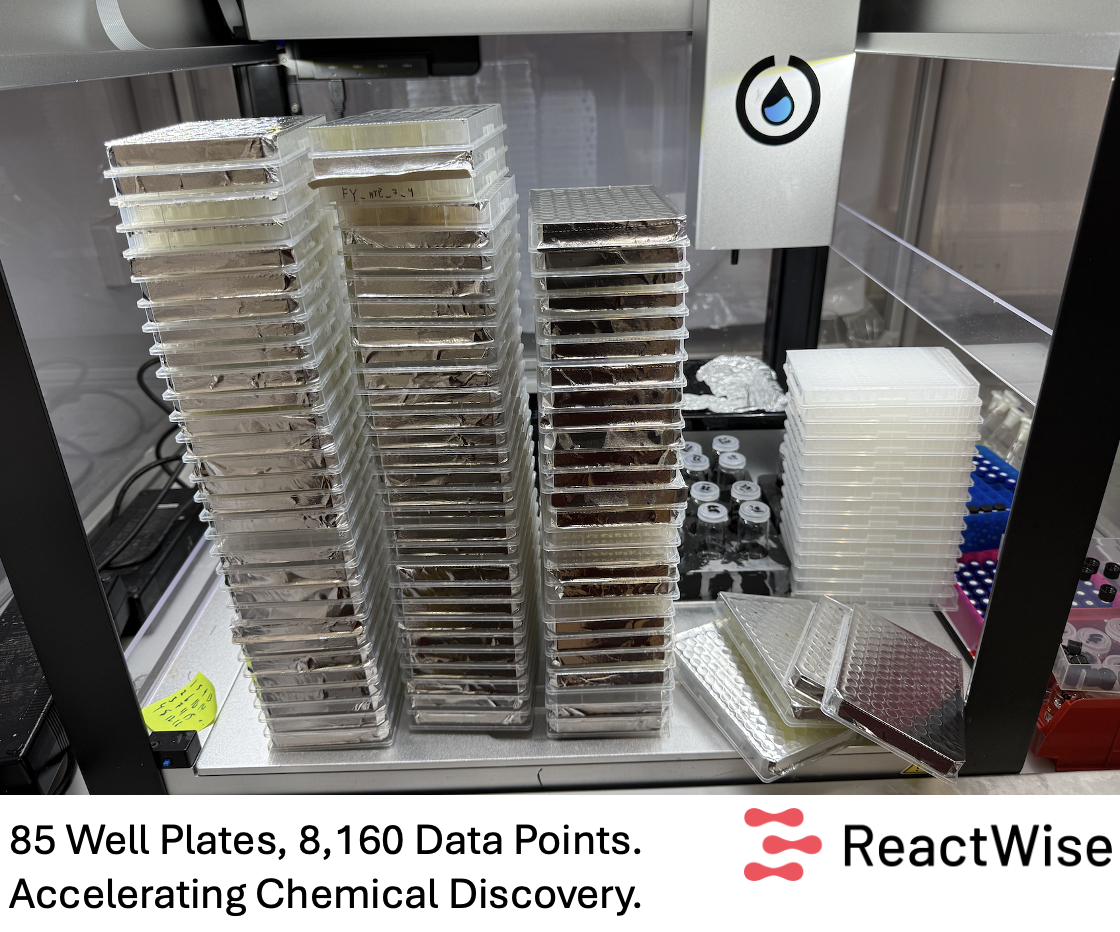
Behind the Scenes of High-Throughput Laboratories: Let’s Talk About the Real Challenges of HTE

Behind the Scenes of High-Throughput Laboratories: Let’s Talk About the Real Challenges of HTE
At ReactWise, we firmly believe in generating our own structured, high-quality data to pre-train our reactivity models, rather than relying solely on public data from literature.
While this approach offers great advantages, it also comes with its own set of unique experimental challenges.
Very often, chemical data - mined from various online databases - is taken for granted by data scientific projects, but it’s easy to forget how much time, effort, and dedication go into generating each single data point.
Here are a few of the many key obstacles we regularly encounter in our lab:
- Material Incompatibility:
Most high-throughput experiment (HTE) plates were designed for biological applications, which limits the types of solvents we can use.
To overcome this, we often have to turn to more specialized alternatives, like glass well plates, or solvents that are both relevant and compatible, to ensure feasibility.
- Miniaturization:
The benefit of using smaller quantities of materials comes with its own challenges.
For instance, HTE setups often lack active stirring, which is critical for many reactions.
Additionally, solids dosing and the capillary effects of solvents, especially in 384-well plates, can complicate matters.
We tackle these issues by utilizing heater-shakers, optimizing solubilization when possible, and using solid HTE dosing and balanced solvent plate capabilities.
- Temperature Constraints:
Temperature control in miniaturized setups is often a significant challenge.
Unlike traditional round-bottom flask reactions where reflux conditions are commonly used, we are frequently limited in terms of the maximum temperature we can apply.
Moreover, material limitations become critical, particularly when it comes to plate sealing. Ensuring these factors are carefully controlled is essential for achieving accurate and reproducible results.
Despite these hurdles, miniaturization remains the best approach for rapidly generating large datasets in organic chemistry.
At ReactWise, we've already generated 10,000+ datapoints using HTE and continue to map out the space of pharmaceutically relevant reactions, driven by our mission to help our clients save time, reduce costs, and make better-informed decisions in their research.
While the challenges never stop, running our own experimental HTE program reminds us every day of the work our customers are doing, understand them better and deliver the best product to support their workflows.


